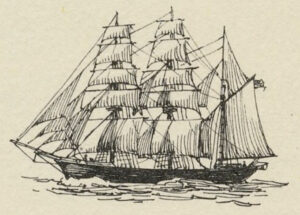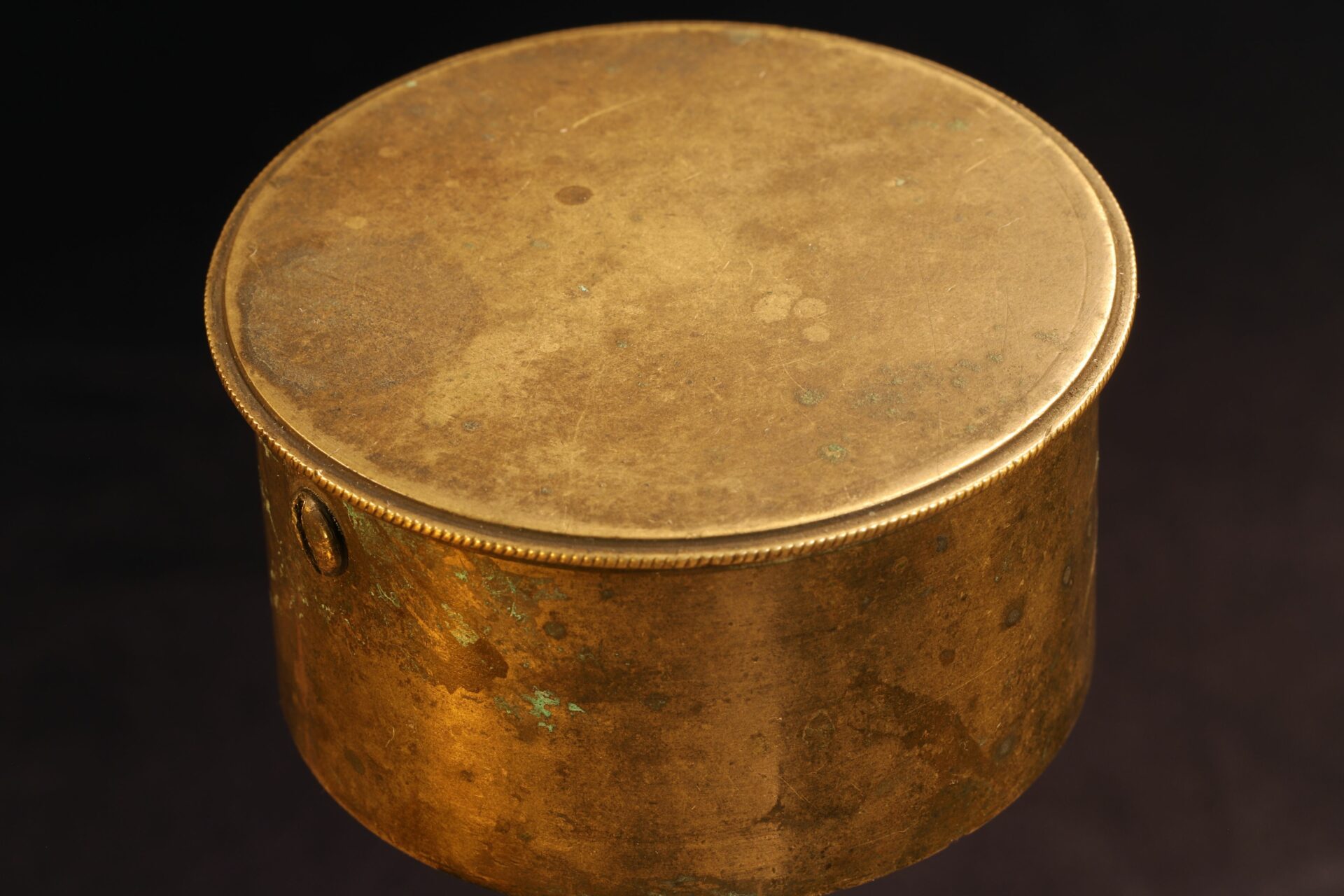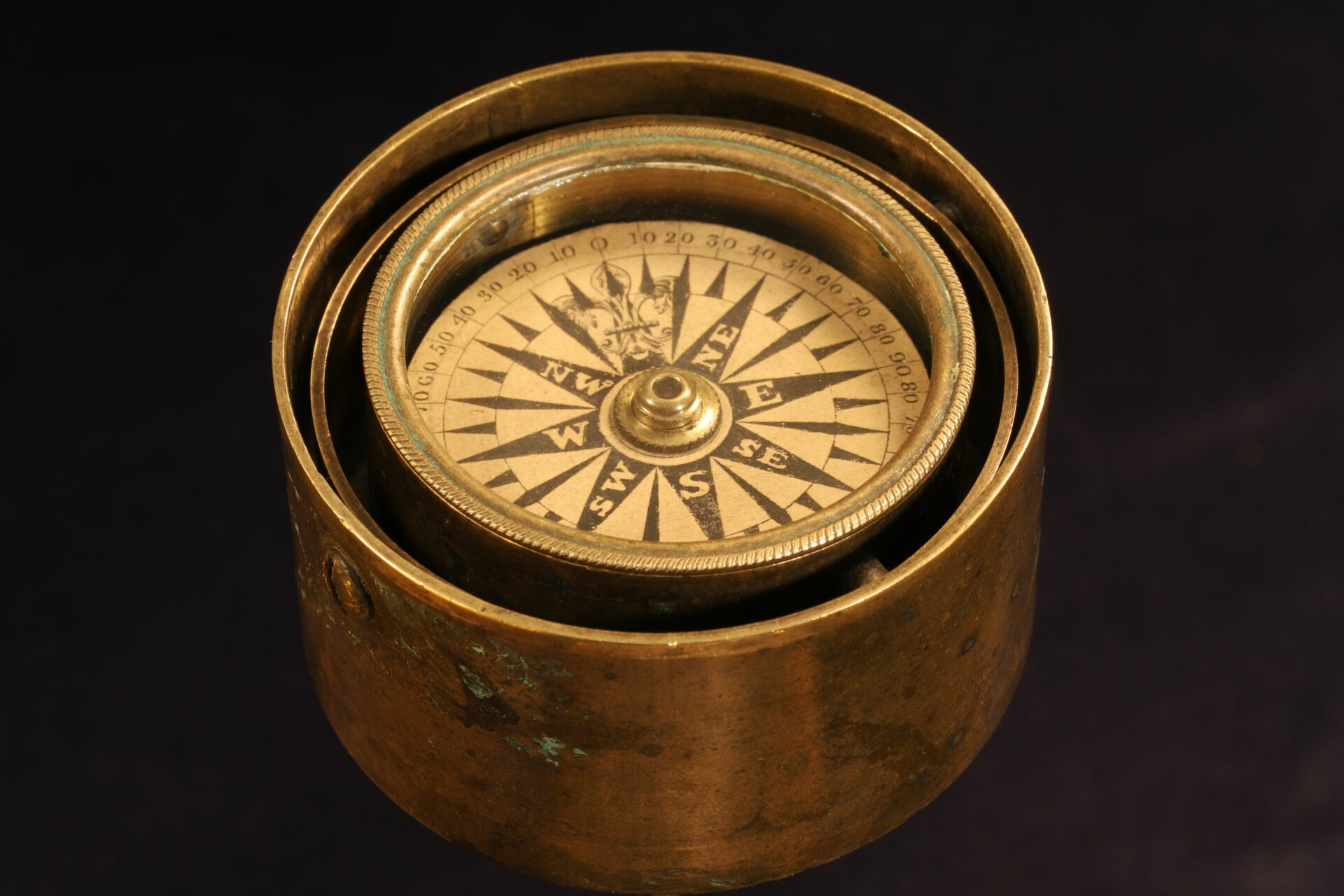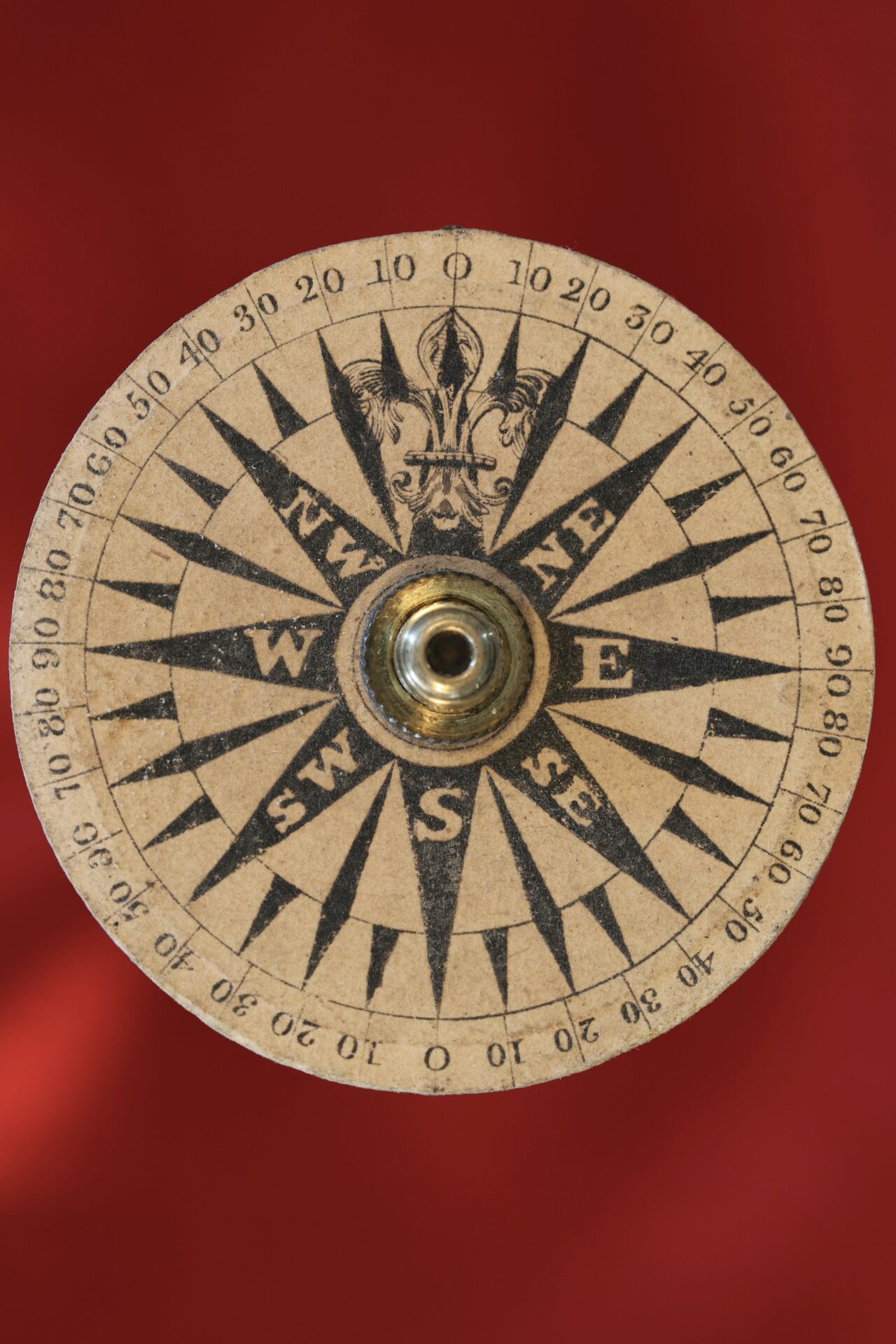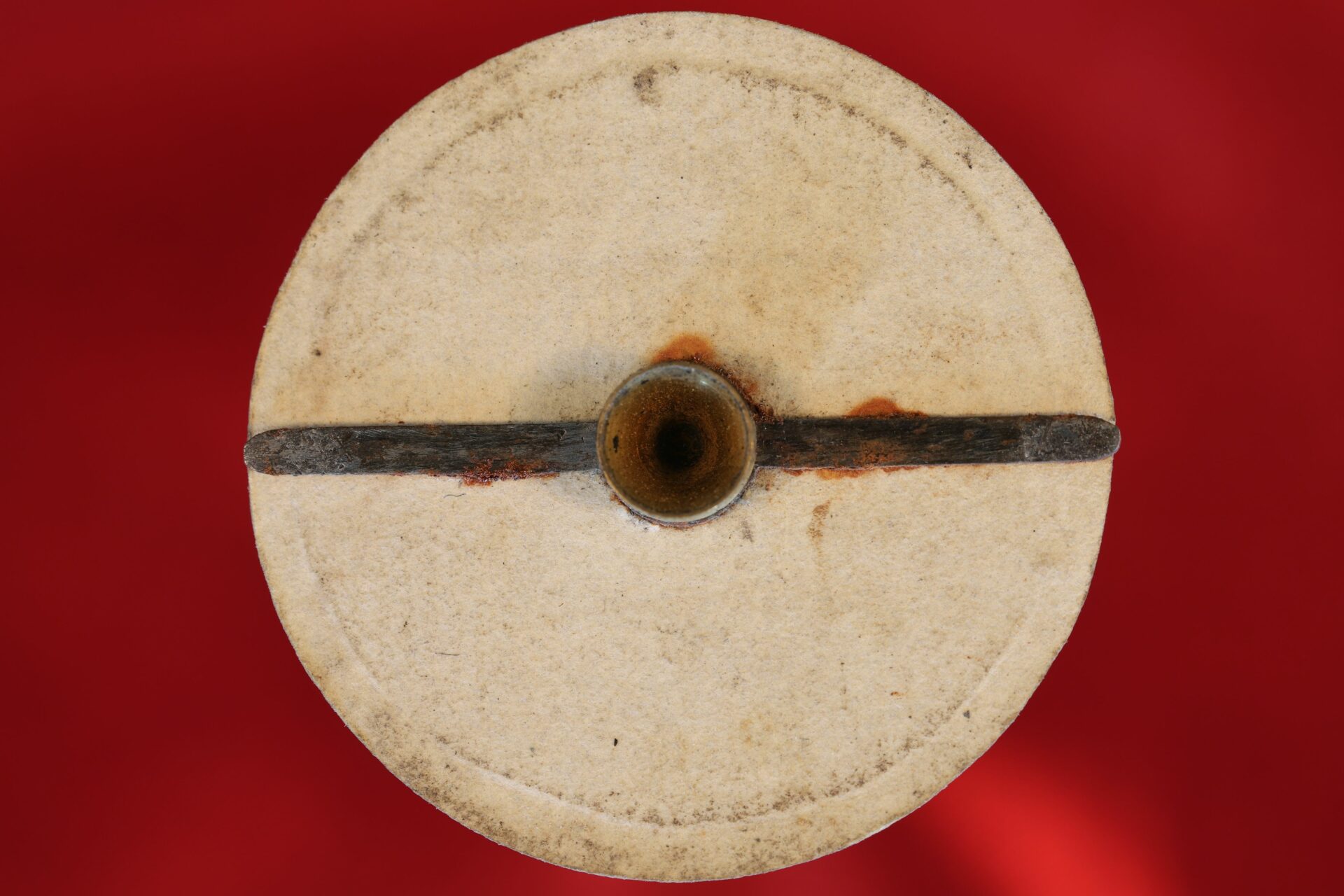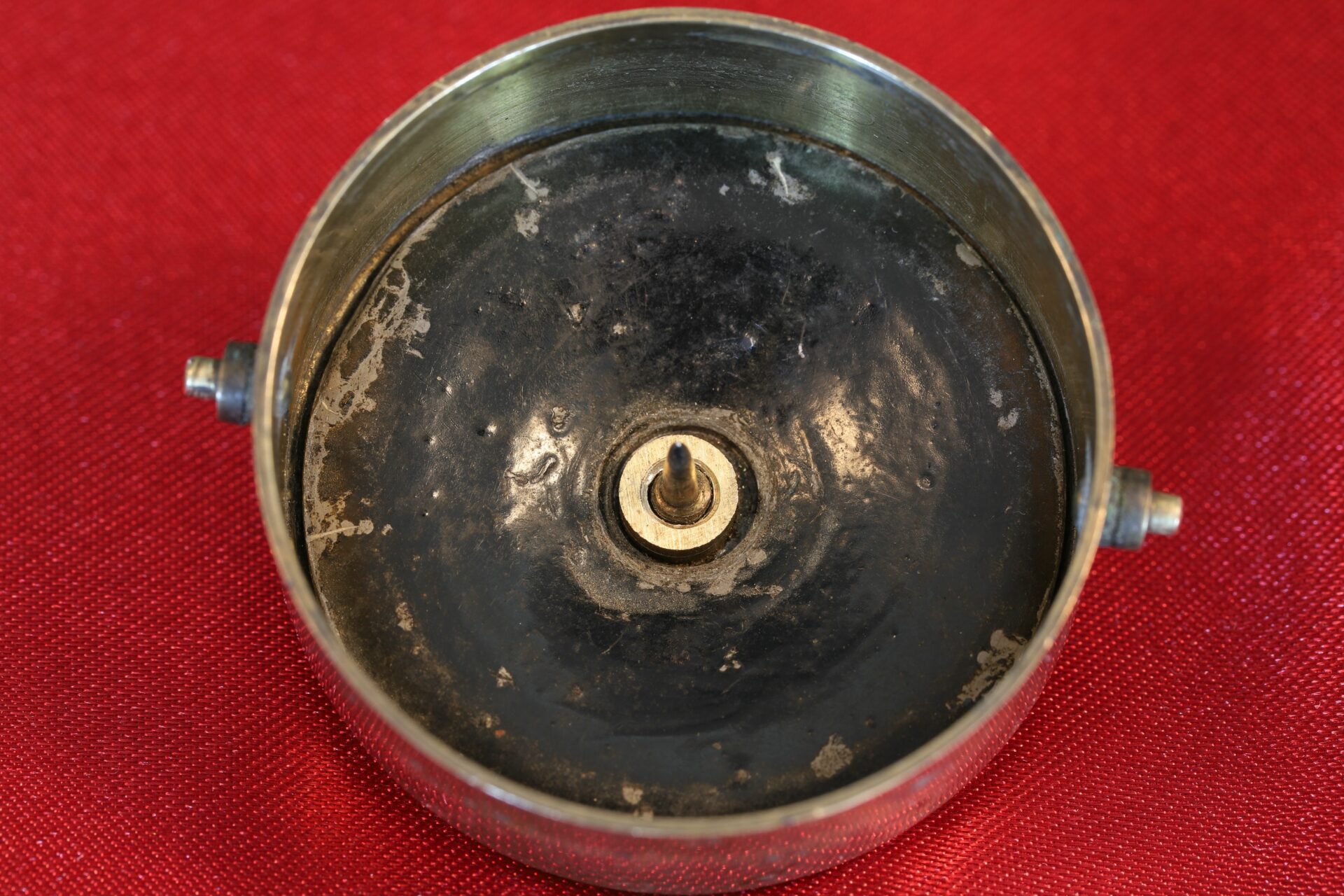Rare Small Gimballed Nautical Compass by Barker c1840 with Provenance – SOLD
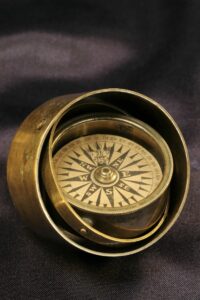 Rare English antique brass gimballed mariner’s compass comprising hand-painted 1½” floating quadrant card with nautical pattern, displaying cardinals and intercardinals, finely executed fleur-de-lys to North. Heavy card suspended on jewelled pivot, the verso with magnetic bar.
Rare English antique brass gimballed mariner’s compass comprising hand-painted 1½” floating quadrant card with nautical pattern, displaying cardinals and intercardinals, finely executed fleur-de-lys to North. Heavy card suspended on jewelled pivot, the verso with magnetic bar.
All within a glazed bowl set on gimballed mountings and contained within a short drum-form case with push fit lid, the underside with scratched annotations: “GM Hunter,” “N Miller”, “ Ship Wilmot.”
In very good original condition, jewel intact, card aged, retaining traces of original whitened azimuth circle. Bowl swings easily within gimbals, the card finding horizontal easily. Glass unchipped, appearing as original. Outer case heavily patinated, some slight pitting, remaining essentially undamaged.
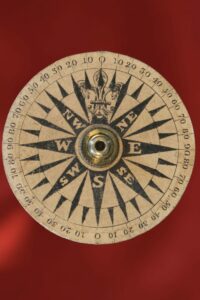 The compass card design is very similar to the earliest known Francis Barker design, dating to c1835, and the card is signed by the dialist – the “60” degrees annotation at 8 o’clock has a reversed “6.” Francis Barker, the pre-eminent compass maker of his time, was in 1840 working with James and George Simms before setting up his own firm, Francis Barker & Son, in 1846. The strikingly similar design and the very fine execution of the fleur-de-lys make it most probable that this card was the work of Barker or one of his compass makers.
The compass card design is very similar to the earliest known Francis Barker design, dating to c1835, and the card is signed by the dialist – the “60” degrees annotation at 8 o’clock has a reversed “6.” Francis Barker, the pre-eminent compass maker of his time, was in 1840 working with James and George Simms before setting up his own firm, Francis Barker & Son, in 1846. The strikingly similar design and the very fine execution of the fleur-de-lys make it most probable that this card was the work of Barker or one of his compass makers.
This is one of those few instances when we have a story, or at least something of a story, to hang an antique on. The detail, names and ship scratched by hand onto the inside of the lid, tie this instrument not only to an accurate period, 1838 – 1843, but to people and a time at sea. It is fascinating to think quite what the voyages were like – to mark an instrument in such a fashion might suggest that the compass owner saw their time together as a most stimulating adventure, a ‘life moment’, one that he would vividly always remember for good and ill. Perhaps these notes so deliberately made were to mark this in time as a tangible momento.
Drawn to find out more about this compass, research has shown that N Miller was master of the Wilmot, a 687 ton sailing barque (or bark). The Wilmot, built by Tristram Ring in Granville, Nova Scotia in 1836, was commissioned by John McNeil Wilmot of St Johns, Newfoundland, and captained by master mariner Drenning from 1836-1838 (as recorded in Lloyds Register of British and Foreign Shipping). By July 1838, the ship had been sold on to a new owner, Mr Sharpe of Greenock, N Miller had taken over as master, and the Wilmot plied her trade between London and Sydney, with additional onward trips to Guam and China, before a new master, Thomas Hamblin, is recorded in 1843, and the ship moored up in Greenock.
Prior to captaining the Wilmot, N Miller is recorded in the Lloyds Register for 1836 as being the master of the sailing barque Maria, 280 tons, sailing between London, Liverpool and New South Wales. We don’t know where Captain Miller went after the Wilmot, as there are several “Millers” under ‘Masters’ in the Lloyds Register of 1845, none travelling the route between the UK and Australia.
Of GM Hunter, nothing has yet been turned up.
Inspected, checked and conserved, this antique nautical compass is in excellent original condition.
A truly wonderful and well-engineered antique compass, the addition of the fascinating provenance makes this a lot for the compass collector and connoisseur alike.
Dimensions: 2⅜” diameter x 1¼” deep
Stock No: SI1049
Price: SOLD
